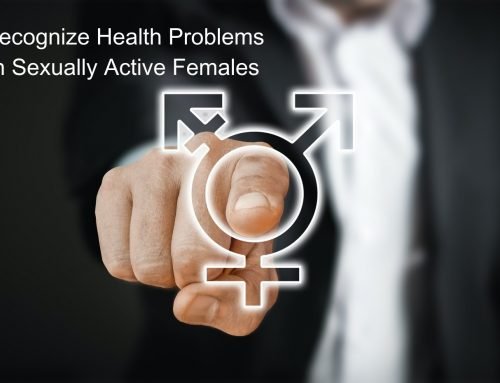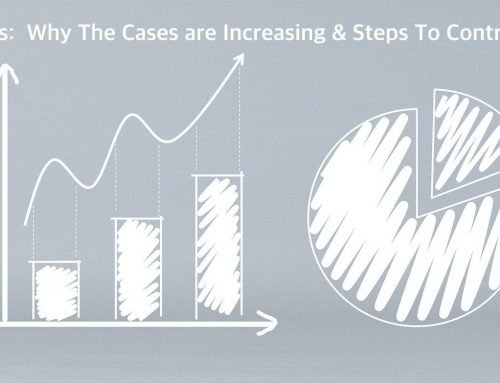
HIV, also known as the human immunodeficiency virus, is a virus that attacks the cells that help the body in battling an infection, thereby compromising the immune system. In other words, it weakens it so much that the body is rendered susceptible to catching more infections and grave illnesses like cancer.
HIV, when it is left untreated, turns into AIDS or acquired immunodeficiency syndrome, it is the stage where the body’s immune system is so weak and damaged that even the mere flu can kill the individual. It spreads through unprotected sex with an infected person, through needle sharing between drug users, blood transfusions, from mother to fetus or childbirth and breastfeeding.
To spread the virus that lives in the bodily fluids of an infected person has to enter the bloodstream of a healthy person, which is usually through the mucous membranes of vagina, anus, mouth, open cuts, or by directly injecting it through a needle. Even today, there is no sure shot way to completely cure it. However, there exists a treatment known as antiretroviral therapy or ART that does help in keeping the count of the virus low in the body, thereby letting the person lead a normal life without any complications as before. Let’s look at how HIV can be diagnosed, treated, and prevented.
Diagnosis of HIV
The only way it can be determined if a person has HIV or not, is by a blood test. If a person feels that they have been exposed to the virus, they should get checked immediately. Further, follow up tests might also be needed. If a person is tested positive, the doctor can then map out a plan as to what type of treatment is needed in order to curb the complications from getting worse. Some of the tests that help diagnose HIV are:
HIV Test
-
Antigen/antibody tests
Through a blood test, the doctor can detect the presence of antigens in the blood, which are substances found in the virus cells, antigens can be found in the blood after some weeks of getting exposed to the HIV virus. Antibodies are substances that the body makes in order to fight the virus. One can also take a combination of both antigen and antibody tests.
-
Nucleic acid tests (NATs)
Nucleic acid tests can be carried out via a blood sample from an infected person. Instead of looking for the antigens or the antibodies, this test looks for the virus itself. This test is usually what’s recommended as the first thing to do after a few weeks of getting exposed to HIV.
-
Antibody tests
This test can be done at home as well and determines the number of antibodies or the substances that the immune system makes to fight off the virus. The test comes out positive after 3 to 12 weeks of a person getting exposed to the virus.
Other Test for Determining Stages
After getting diagnosed with HIV, it is imperative to consult a specialist that will help the individual come to a conclusion as to:
- whether they need any follow-ups
- what type of antiretroviral therapy (ART) will be the best option for them, and help them in assessing the progress of the treatment
To determine the particular stage of HIV that a person is at, it is important to opt for the following tests:
-
CD4 T cell count
The HIV virus solely targets and destroys the CD4 T cells (white blood cells) in the body. Even with no symptoms, HIV still progresses in the body and continues to kill these cells. When a person’s CD4 T cell count drops below 200, a person’s HIV is said to have progressed to AIDS.
-
Drug resistance
Some genetic variants of HIV are resistant to certain drugs. The drug resistance test helps the doctor to see if a particular strain of the virus is indeed resistant to drugs and helps map out a treatment plan to counter that.
-
Viral load (HIV RNA)
Through this test, the amount of virus in the blood is determined. HIV treatments assist in keeping the amount of virus to a minimum and to avoid any further complications experienced due to the virus.
HIV Preventive Measures
-
Treatment as prevention
The antiretroviral treatment (ART) is used to help patients with HIV in relieving its complications. The treatment works by significantly reducing the virus count in the body. After being on the treatment, the virus count in the bodily fluids like the blood, vaginal secretions, and the semen drops so low that it can no longer be detected in a blood test. Once the virus count drops, it means the person can lead a problem-free life, and without the risk of transferring it to someone else. Treatment as prevention or TasP is known as the preventive measures and the treatments using ART to reduce the risk of spreading HIV.
-
Use of Condoms
Since the HIV virus can be transmitted even before a man ejaculates via pre-ejaculation fluid and also through vaginal and anal fluids. It is, therefore, crucial to use both male and female condoms in order to not only prevent HIV but also to avoid contracting any kind of sexually transmitted diseases. A condom can be used for oral, anal, and vaginal sex.
-
Use of lubricants
The use of lube or lubricants is done to avoid too much friction during sex when the vaginal and the anal canal is very dry. It is also used to make sex more pleasurable and safer. Since lubricants add slicker and moisture to the anus and the vagina, it helps in preventing tears and breaks in the skin, thereby preventing STIs and possibly HIV as well. Lubricants are either water-based or oil-based, with condoms, a water-based lubricant is recommended since oil-based lubricants render the latex in the condom weak and so it can easily break during sex.
-
Avoid sharing needles and injections
One of the major ways in which HIV is spread is through the sharing of needles, mainly seen in drug users. Sharing needles also makes a person susceptible to getting diseases like Hepatitis C. Many hospitals and health care centers now have needle exchange programs wherein a used needle can be exchanged for a fresh one. For heroin addicts, there is a special program called a methadone program. Since Methadone is taken in a liquid form rather than by injecting, it greatly minimizes the risk of getting HIV. It is also important for tattoo and piercing enthusiasts to stress on the use of new and sterilized needles every time.
-
Prevention medication
People who are at a greater risk of getting HIV like those that have an HIV positive partner should take pre-exposure prophylaxis or PrEP medication. This medication helps in minimizing a person’s risk of contracting the HIV virus. The medication is available in a pill form and can be taken before engaging in sex.
-
Treatments
Once the HIV virus enters a person’s body, it stays there for a lifetime. It destroys the body’s immune system, and so the body cannot get rid of the virus. HIV to this date does not have a cure, and so people rely on medications and treatments that help in reducing the virus count in the body to an undetectable level. This helps the person to lead a normal life devoid of any HIV related complications whatsoever. Let’s look at the possible treatments for HIV.
-
Emergency HIV drugs
When a person feels that they have been exposed to HIV, for instance, when their partner is HIV positive, they should take the emergency HIV drug known as post-exposure prophylaxis or PEP. The drug should be taken within 72 of coming in contact with the HIV virus. The medication helps by not letting the virus get a firm footing in the body. It is not a sure way to get rid of the virus as sometimes it does not work. Also, it should not be used as a morning-after pill.
-
Antiretroviral medications
HIV has no cure, but there are certain treatments like Antiretroviral Therapy, which uses a combination of different HIV medications. Using just one type of HIV medication can sometimes not be that effective as the virus is known to adapt and so can quickly develop resistance to the drug.
The HIV medications work by reducing the number of virus count in the body and helps in bringing it down to undetectable levels. Newly diagnosed people have to take 1 to 4 pills in a single day, without fail. Regular intake of the HIV medication for about six weeks significantly brings down the virus count in the body, making it undetectable in blood tests. Once starting with the treatment, it is important to get regularly checked and monitored by the doctor to make sure that the medications are effective.
FAQS About HIV Preventive Measures & Treatment:
-
When to start HIV Treatment?
A person who has been exposed to HIV needs to take antiretroviral therapy or ART as soon as possible. Since these medications help in reducing the virus count in the body and preventing it from multiplying, it is crucial to consult a doctor and start with the treatment immediately. If HIV is not treated on time, it can progress and develop into AIDS. A person with AIDS can die from a simple cold, so it is very important to get checked for HIV right away and to take the medications as prescribed by the doctor.
-
What to do if you miss your dose of HIV medication?
Unlike other drugs for minor illnesses missing an HIV dose can be quite detrimental. Missing a dose means giving the virus a chance to multiply again. A person who has HIV should take the medications exactly as prescribed by the doctor. If a dose is missed, it should be taken as soon as possible and then continue with the rest as before. If a person keeps on missing their dose, they should talk to their doctor about methods they can use to help them remember their schedules.
-
What are the benefits of taking HIV medications?
There are scores of benefits that come with the regular use of HIV medications. HIV medications help alleviate the complications associated with HIV. It helps by reducing the amount of virus in the body and preventing it from reproducing further. That is why it gets very crucial to be consistent with the doses and to make sure they are not missed. Missed doses mean the virus starts to multiply again.
As HIV targets and makes the immune system and the CD4 T cells weak, a person is at an increased risk of catching infections. Taking regular HIV medications helps in making the immune system stronger, thus making it possible for the body to fight off infections.
Simply put, HIV medications help by reducing the virus count in the body. After taking the medications for six months without fail, the virus count drops very low and is no longer detectable in blood tests. After reaching this stage, an HIV positive person carries no risk of transmitting HIV to another person, even with unprotected sex.
HIV medications also prevent drug resistance, which is when HIV changes and does not positively respond to a drug. In this situation, the virus stops responding to HIV medications altogether.
Recommended Post: Facts & Statistics Related to HIV
Reference Links
- HIV overview: Reference from onhealth.com
- HIV Diagnosis and Tests: Reference from mayoclinic.org and hiv.gov
- Preventive Measures: Reference from nhs.uk and stanfordhealthcare.org
- HIV Treatments: Reference from nhs.uk and webmd.com, mayoclinic.org





Leave A Comment